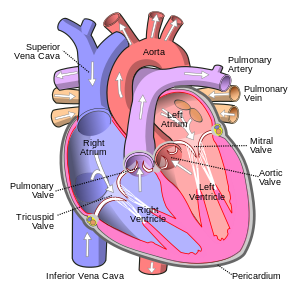

| Visitors Now: | |
| Total Visits: | |
| Total Stories: |

| Story Views | |
| Now: | |
| Last Hour: | |
| Last 24 Hours: | |
| Total: | |
Difficulty Breathing, Chest Pain, And Cough Key Symptoms For Embolism
Monday, October 22, 2012 7:50
% of readers think this story is Fact. Add your two cents.
Difficulty breathing, chest pain, and cough may sound like symptoms of a heart attack; however, new research shows that these are the key symptoms for pulmonary embolism (PE), a potentially fatal blockage in the lung.
Pulmonary embolism (PE) is a blockage of the main artery of the lung or one of its branches by a substance that has travelled from elsewhere in the body through the bloodstream (embolism). PE most commonly results from deep vein thrombosis (a blood clot in the deep veins of the legs or pelvis) that breaks off and migrates to the lung, a process termed venous thromboembolism (VTE). A small proportion of cases are due to the embolization of air, fat, talc in drugs of intravenous drug abusers or amniotic fluid. The obstruction of the blood flow through the lungs and the resultant pressure on the right ventricle of the heart lead to the symptoms and signs of PE. The risk of PE is increased in various situations, such as cancer or prolonged bed rest

Credit: Wikipedia
A research team from Saint Vincent’s Medical Center in Bridgeport, Connecticut, retrospectively reviewed the clinical features, risk factors, and ECG findings in 334 patients with confirmed PE.
Results showed that dyspnea or difficulty breathing, chest pain, and cough were present in 72%, 38%, and 19% of the patients, respectively, and dyspnea was the only presenting symptom in 29%. Cancer was the most common risk factor present in 27%, followed by prior history of deep vein thrombosis or PE, immobilization, and surgery in 19%, 15%, and 15%, respectively.
This study was presented during CHEST 2012, the annual meeting of the American College of Chest Physicians, held October 20 – 25, in Atlanta, Georgia.
Contacts and sources:


